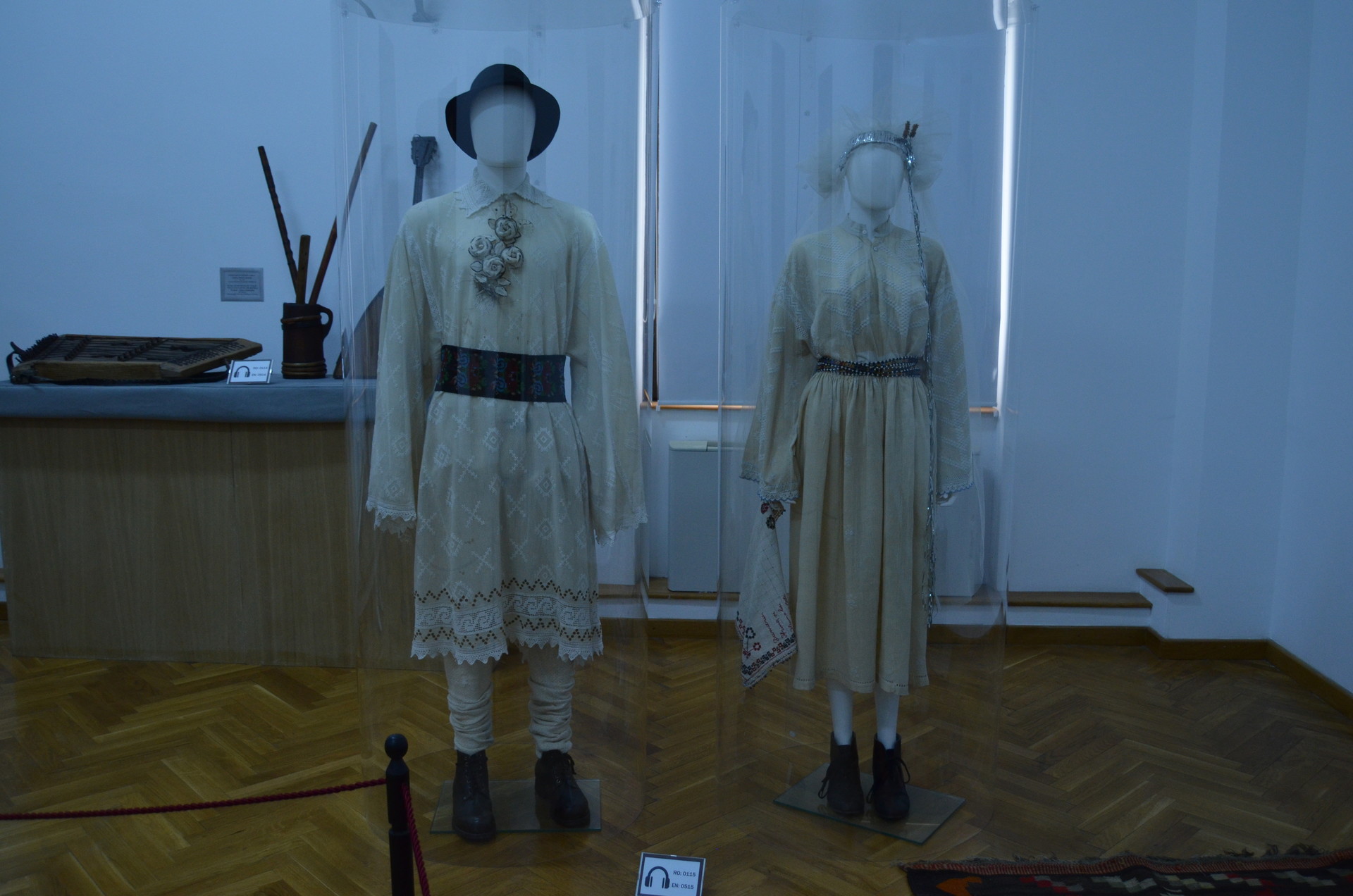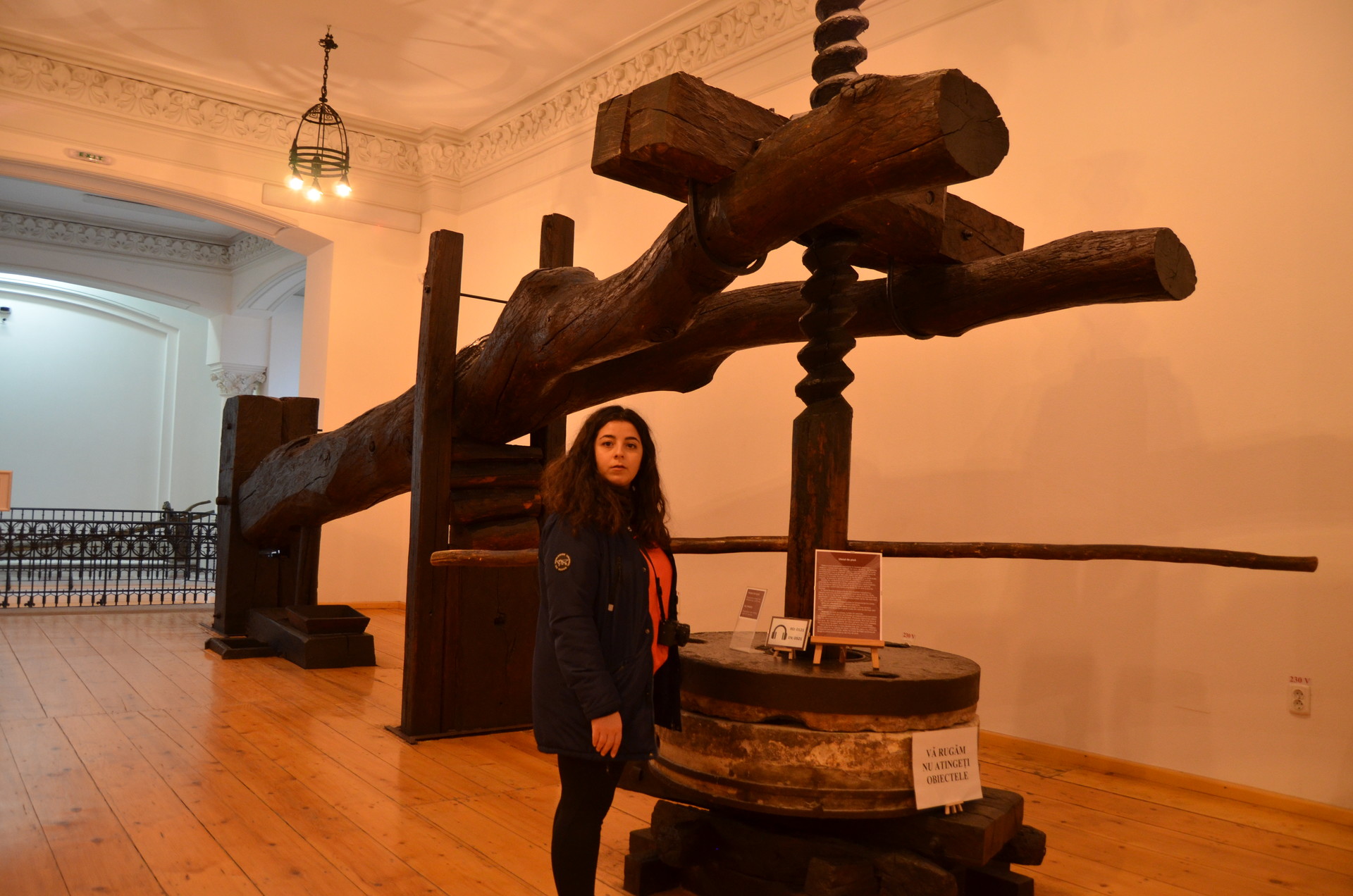Iași: The Ethnographic Museum Of Moldova
Inside the Palace of Culture: The Ethnographic Museum Of Moldova
Moving forward on the first floor I meet The Ethnographic Museum Of Moldova and from an informational panel I find out that this institution has 700 pieces of textile that adorn the interior of the house, but of which there are put on display only 70 such objects.
All of this traditional textiles have very weird names that I haven’t heard before even myself and which I think don’t have an English translation too, but let’s say that these textiles that you can see through the photographs are carpets for walls which were never laid down on the floor.

The history of the colorful textile used as carpets for walls: what were created for?
Back in the days, the main role of these colorful textiles that covered the interior walls of the houses was to keep the room warm and also soundproofing. On the other side, the textile had, of course, an aesthetic function, and the women who created them expressed their inner world through colors and way of storytelling the images and motifs. It is known that, the paints and the materials used by women also indicated their privileged status as well as their craftmanship.

A handmade hard work which took patience and passion
Being made only handmade, these kind of textiles were created with the help of a loom or a “gherghef” as we called in Romanian. The raw material which was used for creating these traditional pieces was the organic wool which was colored either with natural colors coming from various vegetables or herbs, or with chemical paints whose colors were usually much stronger.

The beautiful expression of the textiles
For me, all of these textiles look like very colorful and joyful paintings and I get the feeling of being in a painting exhibition, I don’t see the function anymore, but only the aesthetical value because of their beauty and authenticity.
The traditional motifs and patterns

I am totally impressed and pleased to observe from up close the little details of the textiles and I discover a wide and interesting variety of traditional motifs starting with flowers, tress, birds, animals and even humans, all of them being stylized and simplified in clear geometric shapes but which are still remaining representative. I also think that, all of the motifs have a back reason for being used, becoming symbols that could carry a certain meaning.

Unfortunately, because of a strong smell caused probably by the materials and paints of the textile, I cannot spend a lot of time in these room to get to known these wonderful traditional pieces even more, thus I move forward to discover what’s next.
Romanians have the finest folk costumes
I enter a room full of traditional Romanian folk costume, where I walk very slowly from one piece to another and admire the lovely, so well worked with lots of patience and skill specific blouses, skirts, belts, head veils and pants. It’s impressive how all these patterns and motifs had been manually sewed.
Why are we not dressing like this anymore?

The color combinations along-side with all of the various geometrical, floral or vegetal shapes is outstanding and simply beautiful. Most of the folk costumes are dating back in the 20th centuryand are originating around the region of Moldovia.

The exhibition shows different costumes, either according to the status of the person wearing it, or depending on the activity that was performed while wearing the respective costume, for example, on a corner is displayed the specific clothing for a young couple’s wedding.
How the people were obtaining the vegetable oil back in the days: the fulling mill
Moving forward to the following rooms of the museum, I stumble across same weird looking wooden objects which seem to have had a precise and important use in the past. At first, I cannot explain myself what this old manual machineries were reliance for, but soon I discover their story. More precisely, these wooden objects are called in Romanian “piuă”, a word translated into English as fulling mill. The role of these fulling mills was to crush the seed for obtaining vegetable oil.

The largest oil press or “teasc de ulei” exhibited here is enormous, massive and it makes me curious about how was this working and how the process looked like? Such manual oil presses were realized out of oak wood and were powered exclusively by human force.

Although, looking at these gigantic presses, I have the impression that it would be impossible for a man to maneuver it, thanks to the ingenious system by which they were created, with pulleys and levers, powering the entire process was not so difficult, but rather pretty easy.
Short history about the oil presses exhibited here
Historically speaking, the model of these oil presses was inspired by the people of southern Europe, such as the Greeks or the Romanians, who initially used the machineries to obtain olive oil. The model of the oil presses also reached the Romanian territory due to the commercial exchanges between the people from north and south of the Danube river.
If we donut have olives in Romania, than from what are we making the oil?

But, the Romanians were using the presses to obtain the vegetable oil from a different raw material – because the olive trees are not growing in the Romanian soil or climate – namely from sunflower or pumpkin seeds. The resultant oil was thicker with an yellow color and was generally eaten as such, spread on bread or on “ mămăligă”, the romanian cornbread.
The Ethnographic museum of Moldavia is keeping alive the spirit of past times. Should you visit it or not?
From all of the four museums housed by the Palace of Culture, the Ethnographic museum of Moldavia is surely my favorite one because here I get the chance to see so many relevant, interesting and catchy historical and traditional objects which help me to understand and acknowledge more the Romanian culture.
Probably, the aspect I am very content and happy to notice is linked with the fact that back in the days, my ancestors, in the process of creating the objects that they needed for everyday life or special occasions, were also considering their aesthetic appearance and not only their use. From my point of view, this particular circumstance is very important regarding authenticity, the development of a specific character that will last in time and keeping or bringing alive the spirit of certain past times.
Photo gallery
Want to have your own Erasmus blog?
If you are experiencing living abroad, you're an avid traveller or want to promote the city where you live... create your own blog and share your adventures!
I want to create my Erasmus blog! →
































Comments (0 comments)